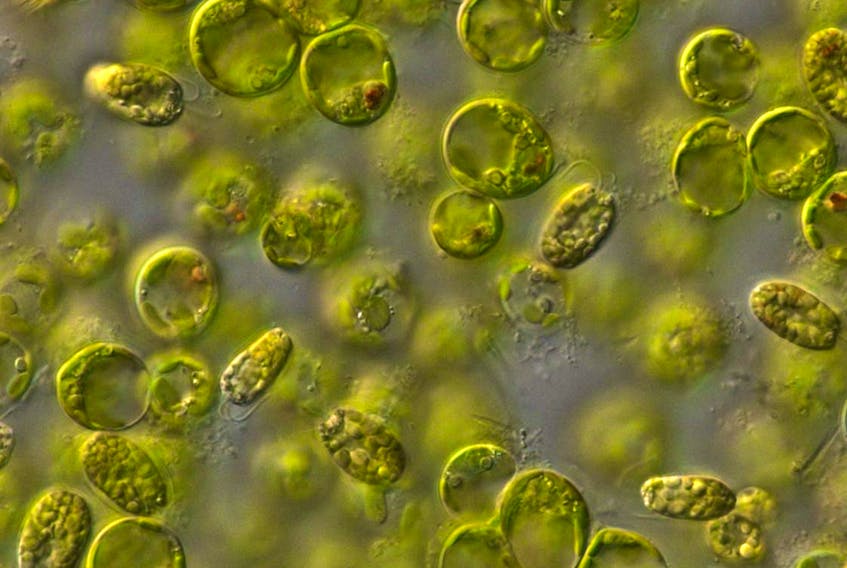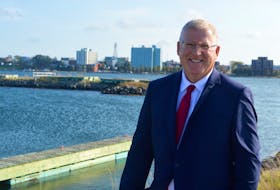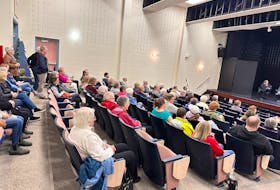A Dalhousie University researcher will lead one of the teams involved in an international effort to sequence the DNA of about 1,000 species in the Aquatic Symbiosis Project.
The collaboration seeks to understand how organisms depend on each other for survival, studying the ecology and evolution of symbiosis in both marine and freshwater ecosystems, according to a recent news release announcing the project.
John Archibald, a professor in the Department of Biochemistry and Molecular Biology at Dalhousie, will lead a team focusing on endosymbiosis, or the relationship of an organism living inside another.
Archibald's field of study is microbes. In his nearly 20 years at Dal, he's studied all kinds of microbes, but in particular for this project, single-celled organisms that have one or more different kinds of organisms living inside them, he said in a telephone interview.
“That's exactly what we mean when we say 'symbiosis,'” Archibald said. “Symbiosis is the general term which would encompass any kind of meaningful interaction between organisms regardless of whether they're big or small. And then endosymbiosis, endo means inside, so that's one cell type inside another cell type.”
Generally, the relationship is a positive one. The opposite would be parasitic.
“Our biggest focus and the longest-reaching focus that we've been studying in my group for 20 years or so is this idea that the photosynthetic machinery that is inside plant and algal cells, those are little things called chloroplasts,” Archibald said.
These are descendants of bacteria living inside other types of cells in a very ancient but vitally important way, he said, because they allow photosynthesis to occur. Half of the world's oxygen is produced by organisms that evolved in that manner, Archibald added.
The Aquatic Symbiosis Project involves four teams of researchers in collaboration with the Wellcome Sanger Institute's Tree of Life program, and the Gordan and Betty Moore Foundation, which funds major research.
Archibald said the resulting data will be open for anyone to use.
The DNA project is appealing because while scientists want to “tease the organisms apart,” Archibald said, you really can't until you look at the genetic level.
“You gotta see what's inside, and often times you can't,” he said. “You can get some information that tells you 'I think I know exactly what that thing is in there,' but the organisms have adapted to one another and you can't actually separate them. And one of the ways that we get around the problem – get at it and get around it – is by analyzing the DNA, the actual genetic material of the different partner organisms, the one inside the other. It's a legacy of the past interactions, so we can piece together who the partners were, even if they've been together for so long that we cannot grow them separately any more.”

In the case of chloroplasts, they came from bacteria but technically aren't bacteria any more because they can't live on their own.
“It happened so long ago, that they are basically melded, they're just assimilated, integrated – whatever word you would want to use – they are completely bonded with the outer organism. They still have DNA inside them, but it's sort of a shadow of its former self and the two organisms are just basically glued together.”
Archibald's team also wants to look into paramoeba perurans, the single-celled amoeba that can cause gill disease in farmed salmon and can infect sea urchins.
“It's just this little blob, it's not colourful, it's not anything. It floats around in the sea and in marine sediments. But when it gets into sea urchins, it can cause all kinds of problems. And biologists have long been studying this at Dalhousie and other places because there are these massive sea urchin die-offs. And what do sea urchins matter? Well, the sea urchins eat the kelp on the rocks, so there is this nested relationship here going on.”
And it turns out the amoebae have got things living inside them, as well, he said.
Archibald's lab has samples growing now, and the team is testing principles and procedures. He expects the first round to be sent to the Wellcome Sanger facility in Hinxton, England, by the end of this year. He estimated the project will take a minimum of three years, start to finish, factoring in the number of people needed to analyze the data and write the papers.
Besides Archibald's research, the other three teams include one at the GEOMAR Helmholtz Centre for Ocean Research, Kiel, Germany, studying symbiosis between ocean sponges and microbes, one at Nova Southeastern University in Florida on photosymbiosis in algae and other microbes involving corals, molluscs, flatworms and other lifeforms, and one at the University of Derby, UK, on coral symbiosis sensitivity to climate change.









